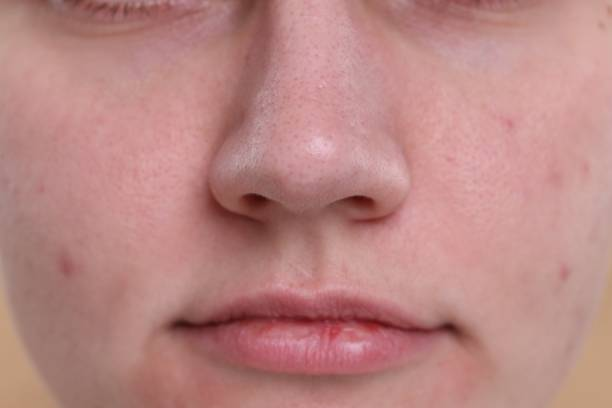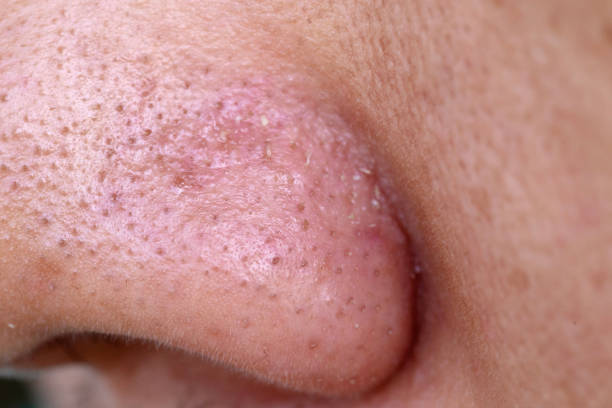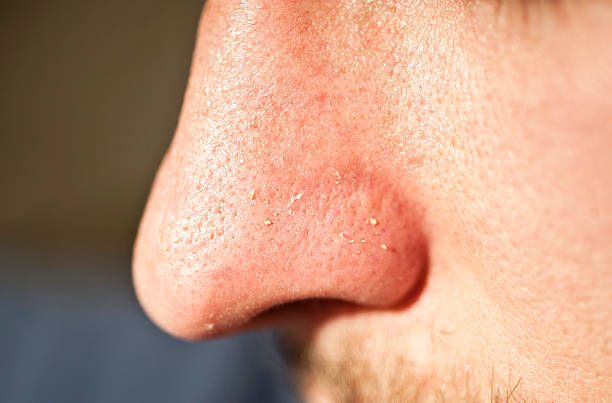Acne comes in various forms, and two of the most common culprits that affect people’s skin are whiteheads and blackheads. Despite both being types of comedones, they possess distinct characteristics that set them apart. This article aims to shed light on these differences, providing a clearer understanding of each. Knowing the distinction is crucial for effective treatment and prevention, since whiteheads and blackheads respond to different skincare approaches. By grasping their unique features, individuals can take targeted actions towards achieving clear and healthy skin.
What Are Whiteheads?

Whiteheads, medically known as closed comedones, appear as small, round, and white bumps on the skin’s surface. These blemishes form when excess oil and dead skin cells clog pores, but unlike blackheads, they are enclosed by a thin layer of skin, which gives them their white or yellowish appearance. The closed environment is conducive to bacterial growth, which may lead to inflammation and pimples. Hormonal changes, diet, and certain makeup or skincare products can increase the likelihood of developing whiteheads.
What Are Blackheads?

On the other hand, blackheads or open comedones, are distinguishable by their dark or black surface. This discoloration is not due to dirt, but rather the oxidation of melanin, the skin’s pigment, upon exposure to air. Blackheads result when a pore becomes clogged by a combination of sebum and dead skin cells and remains open. They often appear on oily areas of the skin, such as the nose, chin, and forehead. Blackheads can persist for a long time as they slowly drain to the surface.
The Key Differences Between Whiteheads and Blackheads
Whiteheads and blackheads are both types of acne caused by clogged pores, but they differ significantly in appearance and the conditions under which they form. Understanding these differences can help in effectively treating and preventing them:
- Color: Whiteheads are closed comedones, meaning the pore is completely blocked, causing the trapped sebum, bacteria, and dead skin cells to appear white or skin-colored. Blackheads, on the other hand, are open comedones. The pore remains open and the exposure to air oxidizes the material inside, turning it dark or black.
- Formation: Whiteheads form under the surface of a closed pore, leading to a small, firm bump. Blackheads form in open pores where the build-up is directly exposed to the air, making them easier to extract because they are not covered by a layer of skin.
- Treatment: Whiteheads often require gentle, more invasive methods to remove because they are enclosed within the pore. Products containing salicylic acid or benzoyl peroxide can help clear these blockages. Blackheads can be treated with regular exfoliation and pore strips or manual extraction to remove the surface debris clogging the pore.
Appearance and Identification
Identifying whiteheads and blackheads is relatively simple based on their appearance. Whiteheads are typically small, whitish bumps that do not have a head, whereas blackheads have a dark, flat surface. The color distinctions are good indicators of which type of comedone you may have on your skin.
Treatment and Prevention Strategies
Treating whiteheads and blackheads requires different strategies. For instance, whiteheads often need products that help open the pore and remove the blockage, while blackheads may respond better to products that help regulate oil production and promote pore clearing.
How to Safely Manage and Treat Whiteheads and Blackheads
There are several over-the-counter options for treating both whiteheads and blackheads. Products containing salicylic acid, benzoyl peroxide or alpha-hydroxy acids can be effective. Home remedies, on the other hand, can include gentle exfoliation, a proper cleansing routine, and the use of natural ingredients known for their skin-clearing properties.
- Gentle exfoliation with a natural scrub to remove dead skin cells
- Maintaining a consistent cleansing routine to keep pores clear
If over-the-counter treatments do not improve your whiteheads or blackheads, or if your acne is severe, it’s time to consult a dermatologist. They can provide prescriptions for more potent treatments and offer in-office procedures like professional extractions and chemical peels that can be more effective against stubborn acne.
Conclusion
In conclusion, understanding the difference between whiteheads and blackheads is the first step towards effective skincare. While both are types of acne caused by clogged pores, they differ in appearance, causes, and treatment. By identifying the type, individuals can select the most appropriate treatments and prevention methods for their skin. Consistency in care and seeking professional advice when necessary will pave the way to clearer, healthier skin.
FAQs About Whiteheads and Blackheads
What Is the Main Cause Behind Both Whiteheads and Blackheads?
The main cause of both whiteheads and blackheads is clogged pores filled with excess oil, dead skin cells, and sometimes bacteria. Hormones and environmental factors can also play a role in their development.
Can Whiteheads Turn Into Blackheads?
Whiteheads do not typically turn into blackheads. While both originate from clogged pores, whiteheads are covered by skin whereas blackheads are open to the surface, which leads to oxidation and darkening.
Are Whiteheads and Blackheads a Sign of Poor Hygiene?
Poor hygiene is not the primary cause of whiteheads and blackheads. They result from a combination of factors like oil production, dead skin cells, and hormonal changes that are not directly related to cleanliness.
How Often Should I Exfoliate to Prevent Whiteheads and Blackheads?
It is generally recommended to exfoliate 2-3 times per week. Over-exfoliation can irritate the skin and worsen acne, so it’s important to find a balance that works for your skin type.
What Are Some Common Mistakes to Avoid When Treating Acne?
Some common mistakes include over-washing or harshly scrubbing the skin, popping or picking at pimples, and using comedogenic products that can block pores. Always be gentle with your skin and choose non-comedogenic products.



